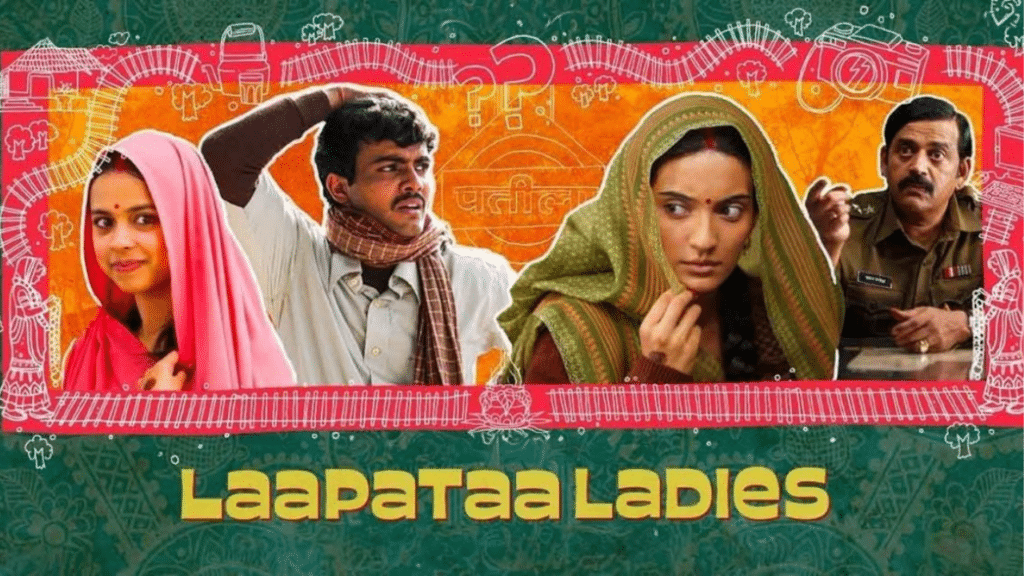Kiran Rao’s Laapataa Ladies has been one of the most talked-about films of 2024—not just for its compelling storytelling and fresh cast, but also for the recent controversy surrounding its originality. While the film gained praise for its portrayal of rural India and nuanced performances, a recent viral video has brought it under fire, comparing it to the 2019 Arabic short film Burqa City. This has sparked discussions online, with some netizens calling it a case of “copy-paste.” But is it really?
The Viral Clip and What It Shows
The video that triggered the conversation highlighted scenes from Laapataa Ladies andBurqa City, pointing to similarities in plotlines—particularly the idea of veiled women being accidentally swapped, and the husbands’ ensuing confusion. One parallel that caught attention was a scene where the husband shows a picture of his bride to the police—a moment echoed in both films.
But while these coincidences exist, the heart of Laapataa Ladies lies in a completely different social and cultural context. The film is set in rural India in 2001, where the use of a ghoonghat (veil) is not just visual but deeply symbolic—representing gender roles, traditions, and identity in small-town society.
Recycled Theme or Reinvented Narrative?
It’s worth noting that stories involving mistaken identities, swapped brides, and comedic confusion are not new to cinema—Indian or international. Themes like these have existed for decades, and multiple creators may explore similar ideas independently, drawing from universal human experience
In fact, back in July 2024, actor-filmmaker Ananth Mahadevan compared Laapataa Ladies to his 1999 film Ghunghat Ke Pat Khol, which also dealt with mistaken brides. This only reinforces the fact that such motifs are not exclusive to any one culture or film—they’ve been a part of storytelling traditions worldwide.
About Laapataa Ladies
Here’s a quick snapshot of the film that has caught the country’s attention:
- 🎬 Directed by: Kiran Rao (her comeback directorial after a long hiatus)
- 📝 Story by: Biplab Goswami | Screenplay: Sneha Desai
- 🌟 Cast:
- Nitanshi Goel as Phool Kumari
- Pratibha Ranta as Jaya
- Sparsh Shrivastava as Deepak
- Ravi Kishan as the witty Inspector Shyam Manohar
- Chhaya Kadam in a supporting role
- 📍 Setting: Rural India, 2001
- 🎥 Plot: Two newlywed brides, traveling with their faces veiled in traditional ghoonghats, are mistakenly swapped during a chaotic train journey. As their husbands attempt to find them, a larger tale of self-discovery, empowerment, and rural quirks begins to unfold.
- 🏆 Highlight: Selected as India’s official entry for the 97th Academy Awards (Oscars) in the Best International Feature Film category.
- 📺 Streaming: Gained massive popularity post its release on Netflix after a modest theatrical run.
Why Laapataa Ladies Stands Apart
What makes Laapataa Ladies special isn’t just its plot—it’s the layered treatment of characters, rural feminism, and societal satire. Kiran Rao, along with writer Biplab Goswami and co-producer Aamir Khan, crafted a world that feels distinctly Indian. The train journey, the small village setting, the exploration of women’s agency, and the infusion of humor and heart are elements that give the film its unique voice
The performances by newcomers Nitanshi Goel, Pratibha Ranta, and Sparsh Shrivastava brought depth and authenticity, and actors like Ravi Kishan and Chhaya Kadam added further credibility to the film’s immersive narrative.
The Bigger Picture
The plagiarism discussion raises valid questions about inspiration and originality, but it’s also important to look at a film holistically. A similar scene or a shared idea does not automatically negate the creative work that goes into building an entirely different cinematic world.
Moreover, Laapataa Ladies resonated with audiences not because of a twist in the plot, but because of its emotional core, regional charm, and progressive storytelling. Its success on streaming platforms and selection as India’s official entry to the Oscars reflects the film’s impact and cultural relevance.
The film may share a few surface-level similarities with others, but its soul is deeply rooted in Indian soil—a tale told in a voice that’s refreshingly original and unmistakably its own.

